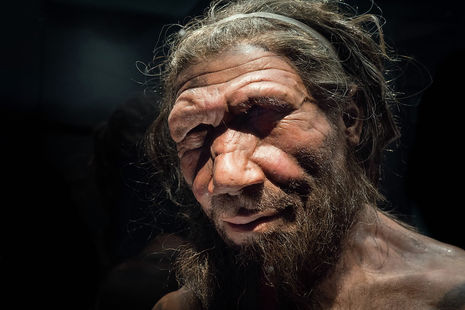‘Dragon Man’ and its place in evolutionary history
In this exciting report of a new insight in palaeontology, Jonny Gathercole explores the story of how an unusual skull found in 1933 may shed light on the elusive Denisovans

In recent months, a revelation made by an elderly Chinese man on his deathbed has shaken the already arguably contentious field of human evolutionary history.
In 1933, whilst completing construction on a bridge over the Songhua River in China, this elderly man in his youth uncovered a remarkably intact fossilised skull from the riverbed. Perhaps sensing its value, the man hid it inside his family’s well – a location far away from the Japanese soldiers who occupied the region at the time. Over 80 years passed before the man revealed the lonesome fossil’s location to his children, and in 2018 the children, in the wake of their father’s passing, donated the skull to the scientific community. The skull was immediately examined by palaeoanthropologist Qiang Ji and his research team, who are based in Hebei GEO University, China. The group named the more-than-146,000-year-old fossil the ‘Harbin cranium’, an apt name considering its discovery in the city of Harbin.
In one of the three initial research papers, the authors explain that aside from a missing jawbone, the Harbin skull is “an undistorted and almost complete cranium”. Ji and colleagues elaborate that the Harbin skull presents a “mosaic of features”. A mosaic that bizarrely includes morphological attributes typical of our own species, as well as those typical of far more archaic hominins. The authors put it simply by stating “(the Harbin skull has) a wide but H. sapiens like face”. In fact, this peculiar combination of cranio-morphological traits led to the researchers’ affirmation of the skull as “the most complete representative of a distinct middle Pleistocene lineage”.
In light of this information, Ji and his research colleagues concluded there was sufficient evidence to declare the Harbin cranium as the single member of a brand-new species, Homo longi. The name comes from “Long Jiang”, which describes the original area of the skull’s discovery and translates to “dragon river”. Thus, Homo longi, which in turn offers the literal translation of “Dragon Man”.
It is the declaration of Harbin-exclusive-speciation where other palaeoanthropologists start to disagree. Many believe that instead of constituting a new species, the Harbin cranium is instead the first relatively complete fossil of the ever-elusive Denisovans.
Prior to 2019, the Denisovans were known only by a genome extracted from fragmentary fossils in Denisova cave, Siberia. Excluding the finger bone and molar tooth from which this genome was withdrawn, there existed little to no morphological information on this mysterious group. In a bizarre way, the Denisovans existed conceptually far more than they did physically. The arrival of 2019 brought the discovery of (half) a 160,000-year-old lower jawbone, called the Xiahe mandible, and a few teeth, from a cave 2,500m above sea level in the Tibetan Plateau. Miraculously, the initial researchers were able to extract some genetic material from a dentine proteome (essentially a protein on one of the teeth), and low and behold it matched the Denisovans, thus delivering the palaeoanthropological community the bottom quarter of a Denisovan face. Shortly after, a paper was published outlining the discovery of Denisovan mitochondrial DNA being trapped in the sediment of the same Tibetan cave. Interestingly, the DNA deposits were present in three different layers of sediment, and thus three different time periods, thereby suggesting the extended occupation of the cave by the Denisovans.
“Whilst this amalgamation of evidence seems conclusive, consensus is likely aloof”
So where does the Harbin cranium fit in? Well, considering the previous evidence on the likelihood of the Xiahe mandible as a Denisovan mandible, we must return to the original paper. Ji and his colleagues describe how the second upper molar (M²) of the Harbin skull matches that of the Xiahe mandible. Not only this, the authors of the paper express how “the Harbin M² also matches the known permanent Denisovan molars in size and root morphology”.
Whilst this amalgamation of evidence seems conclusive, consensus is likely aloof. Similarities in dentition do not necessarily mean two individuals are of the same species. Moreover, the genetic evidence linking the Xiahe mandible and the Denisovans does not rule out the possibility of a close Denisovan relative as the culprit.
So, when can we expect answers? In a bid to settle the debate, there is currently an effort to obtain genetic material from the Harbin cranium, however this is by no means a guarantee. Despite this, the possibility of the Harbin cranium belonging to a Denisovan is an exciting prospect. In the words of our own Professor Marta Lahr in a recent BBC interview, “Now we may actually have the first face of the Denisovans”.
 News / Eight Cambridge researchers awarded €17m in ERC research grants27 December 2025
News / Eight Cambridge researchers awarded €17m in ERC research grants27 December 2025 News / Downing investigates ‘mysterious’ underground burial vault 29 December 2025
News / Downing investigates ‘mysterious’ underground burial vault 29 December 2025 Lifestyle / Ask Auntie Alice29 December 2025
Lifestyle / Ask Auntie Alice29 December 2025 Sport / Hard work, heartbreak and hope: international gymnast Maddie Marshall’s journey 29 December 2025
Sport / Hard work, heartbreak and hope: international gymnast Maddie Marshall’s journey 29 December 2025 News / News in Brief: carols, card games, and canine calamities28 December 2025
News / News in Brief: carols, card games, and canine calamities28 December 2025






